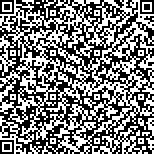| 本文已被:浏览次 下载次 |

码上扫一扫! |
|
|
|
| Experimental study on effective thermal conductivity of bi-porous wick |
|
QU Yan, ZHANG Kunfeng, CAO Wei, ZHOU Kan
|
|
(College of Chemical Engineering in China University of Petroleum, Qingdao 266580, China)
|
| Abstract: |
| Comprehensive effects of pore forming content, compacting pressure, holding time, sintering temperature and pore forming particle size on porosity, effective thermal conductivity (ETC) of saturated bi-porous nickel wicks, were studied through 16 groups of sintering experiments with five factors and four levels orthogonal design. The experimental results were compared with the calculated values from 11 ETC models of porous medium. The optimal level of five key sintering parameters was obtained from the point of making the ETC value as least as possible. The results show that the most important influencing parameter on the ETC of bi-porous nickel wick is the content of pore forming agent, whose impact factor is 1.9 times of compacting pressure and 2.2 times of sintering holding time, respectively. The effect degrees of sintering temperature and the particle size of pore forming agent are similar and small. The calculated values based on Alexander model and Maxwell model, which are most commonly used models for the ETC estimate of loop heat pipe (LHP) porous wick, are overestimated and underestimated compared with the experimental values, respectively. In the porosity range of 0.5-0.7, an average value based on the Chernysheva & Maydanik model and the Chaudhary & Bhandari model can fit the experimental data best. |
| Key words: bi-porous wick effective thermal conductivity loop heat pipe sintering parameter porosity |
|
|